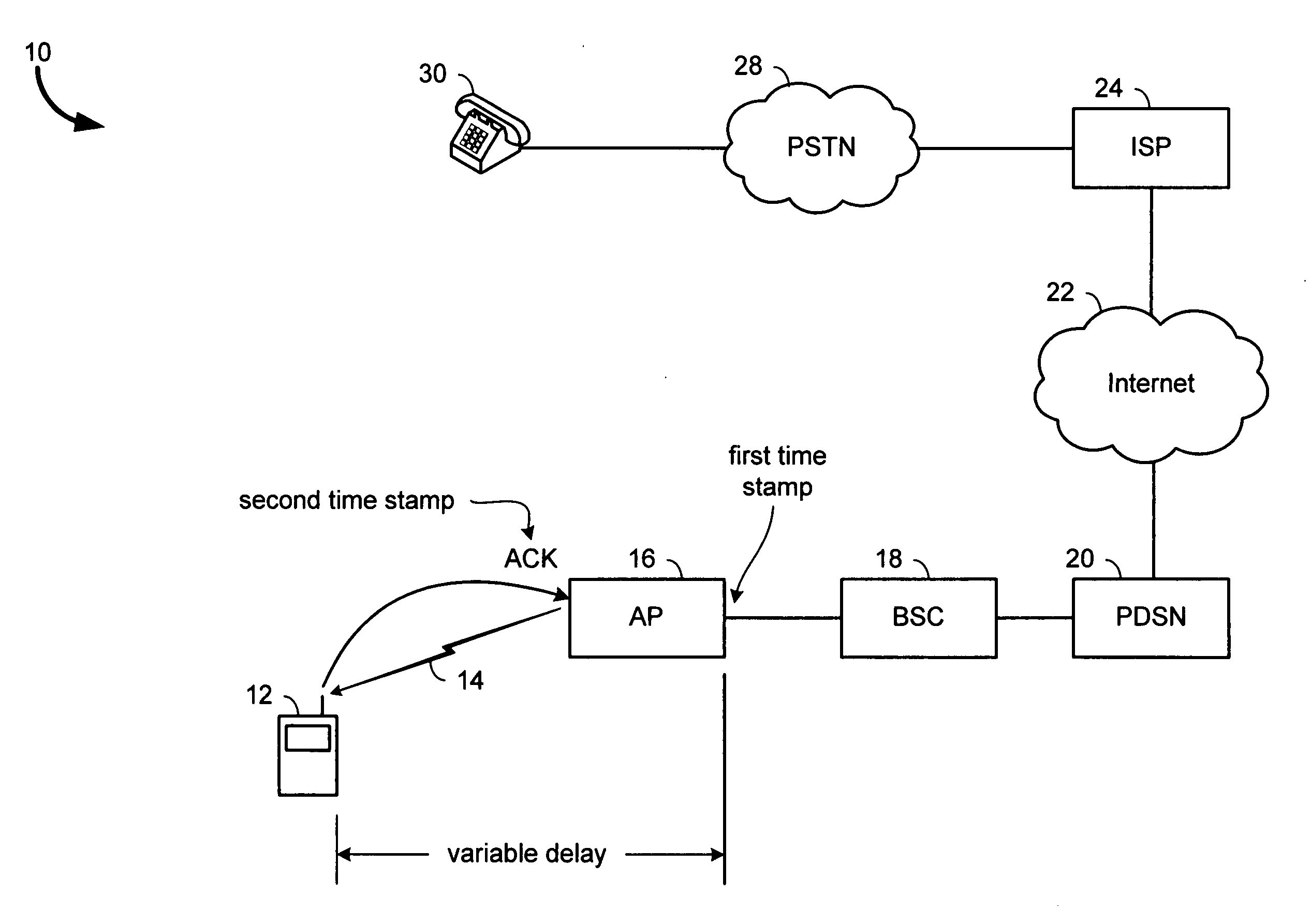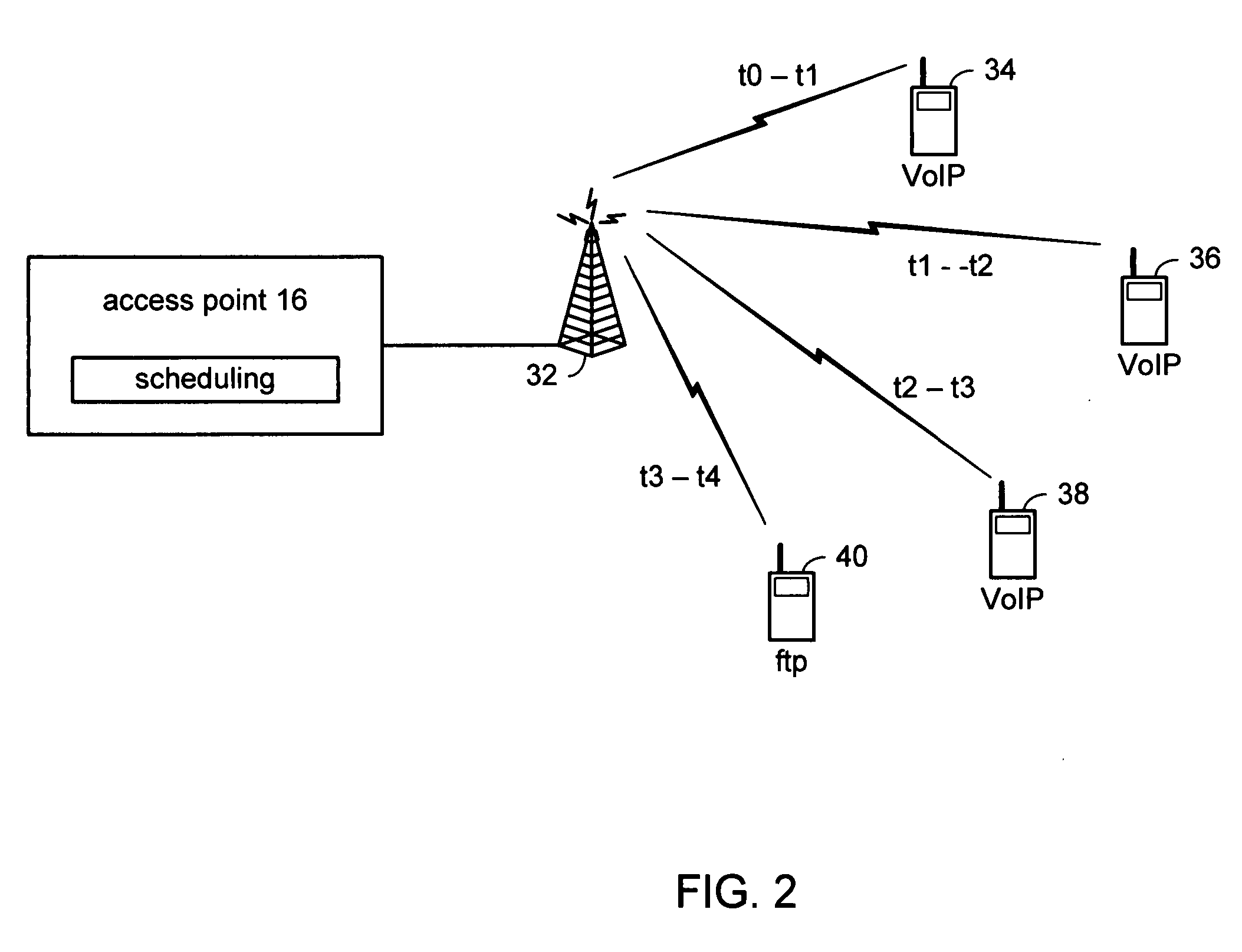Voice over Internet protocol (VoIP) call admission and call regulation in a wireless network
a wireless network and voice over internet protocol technology, applied in the field of wireless networks, can solve the problems of increasing the number of users in the network, increasing the error rate (per) and packet drop rate, etc., to achieve the effect of maintaining acceptable quality of service (qos) levels, lowering the mean opinion score, and increasing the length of time individual data packets are waiting
- Summary
- Abstract
- Description
- Claims
- Application Information
AI Technical Summary
Benefits of technology
Problems solved by technology
Method used
Image
Examples
Embodiment Construction
[0023] These and other features, aspects and advantages of the present invention will be more fully understood when considered with respect to the following detailed description, appended claims and accompanying drawings wherein:
[0024]FIG. 1 is a communications network formed according to one embodiment of the present invention. In the communications network shown generally at 10, mobile terminal 12 is engaged in a voice over Internet Protocol (VoIP) call with a landline 30 through a wireless interface to the packet data network. Communications network 10 includes an access point (AP) 16, a base station controller (BSC) 18, a pack data serving node (PDSN) 20, Internet 22, and Internet service provider (ISP) 24, public switched telephone network (PSTN) 28, and landline 30.
[0025] One aspect of the present invention is to control mobile terminal access to communications network 10 and mobile terminal control while connected to communications network 10. Traditional packet data applica...
PUM
 Login to View More
Login to View More Abstract
Description
Claims
Application Information
 Login to View More
Login to View More - R&D
- Intellectual Property
- Life Sciences
- Materials
- Tech Scout
- Unparalleled Data Quality
- Higher Quality Content
- 60% Fewer Hallucinations
Browse by: Latest US Patents, China's latest patents, Technical Efficacy Thesaurus, Application Domain, Technology Topic, Popular Technical Reports.
© 2025 PatSnap. All rights reserved.Legal|Privacy policy|Modern Slavery Act Transparency Statement|Sitemap|About US| Contact US: help@patsnap.com



